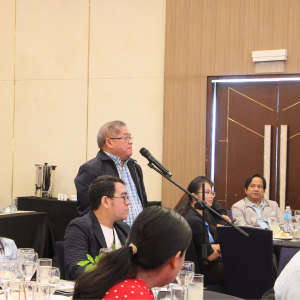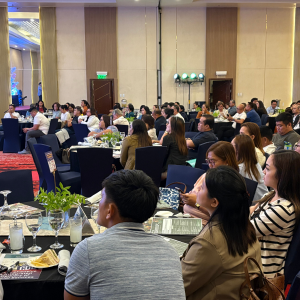To kick off the implementation of the Philippine Community Resilience Project (PCRP), the DSWD Field Office 7, through the KALAHI-CIDSS Regional Program Management Office, convened 27 municipalities from Cebu and Bohol for an orientation held on July 16, 2025, in Mandaue City.

The orientation highlighted the PCRP’s main features, including the project’s implementation process, timeline, and enrollment procedures, ensuring that LGU partners are well-informed about the project before their engagement.
The PCRP is a five-year program designed to strengthen community capacities for participatory resilience planning and increase access to resilient investments in vulnerable areas. The project will cover 49 provinces and 500 municipalities nationwide.
Under the PCRP, the LGUs may construct sub-projects that fall on categories, such as resilient facilities (e.g., flood and drought protection, health facilities, water system, retrofitting of existing facilities). Resilient livelihoods (pre and post-harvest facilities, storage solutions, drainage and small-scale irrigation), and ecosystem conservation or protection, such as mangrove preservation, eco-tourism park, solid waste management, and construction of material recovery facilities (MRFs).
Eight mayors from the municipalities of President Carlos P. Garcia (PCPG) and Getafe in Bohol, as well as Ginatilan, San Remigio, Medellin, San Francisco, Asturias, and Alegria in Cebu. Vice mayors from PCPG, Getafe, San Remigio, Tudela, Bantayan, Asturias, Malabuyoc, and Alegria attended Wednesday’s orientation.
In addition, key municipal officials—such as Municipal Social Welfare and Development Officers, Municipal Planning and Development Officers, and Municipal Budget Officers—were present from the following municipalities: Balamban, Tuburan, Santander, Sibonga, Boljoon, Dalaguete, Samboan, Oslob, Alegria, Badian, Barili, Ginatilan, Asturias, Pinamungajan, Pilar, Poro, San Francisco (Camotes Islands), Medellin, Tudela, Ubay, Bantayan, Santa Fe, and Tabogon.
The LGUs invited to the orientation were considered potential participants in the PCRP and eligible to receive grants for disaster resilience projects, contingent upon a capacity assessment and the completion of enrollment requirements.
Criteria for targeting
LGU participants for the PCRP are considered based on poverty incidence (≥18.1%); environmental hazards with moderate to high severity; stunting rate among children below 5 years old, and indigenous population fraction.
Under the PCRP, first to third class municipalities may receive a government grant of P50 million to implement resilient sub-projects (SPs). In return, they must provide a Local Counterpart Contribution (LCC) of P10 million, bringing the total sub-project funding to P60 million.
Meanwhile, fourth to sixth class municipalities are entitled to a P70 million grant, with a required P14 million LCC, for a total SP funding of P84 million.
LGUs concerns
Among the questions asked by the local chief executives during Wednesday’s orientation were about the required percentage breakdown between cash and in-kind contributions for the LCC; if the funds from the PCRP project be used to restore previous livelihood SPs, and the provision of official memorandum detailing the LCC requirements so the LGUs can identify possible funding sources.
KALAHI-CIDSS Deputy Regional Program Manager Helen Ybañez, Project Evaluation Officer Rodina S. Pangilinan, and Supervising Administrative Officer Harold Ricaborda, the resource persons, responded to the questions.

Ybañez also emphasized in her presentation the waiver and disengagement processes of the PCRP for the LGUs guidance.
In her welcome message during the PCRP orientation, DSWD-7 Regional Director Shalaine Marie Lucero emphasized the crucial role of local leaders in building disaster-resilient communities.
“The Panahon ng Pagkilos Project is not just another program. It is a call to collective action – to strengthen local systems, empower communities, and ensure that no one is left behind, especially in times of crisis,” Lucero said.
DSWD Assistant Regional Director for Administration Tonyson Luther Lee, in his message of support, emphasized that “real change begins at the local level.”
“Your role as implementing LGUs is not just important – it is indispensable. You are the bridge between vision and reality. The strength of this program lies not in our offices or documents, but in your commitment, your leadership, and your courage to act for the people you serve,” he said.
Earlier in February, the KALAHI-CIDSS RPMO 7 consulted with stakeholders and brought together participants from various sectors to discuss the project’s safeguards policy and gather community feedback. ###